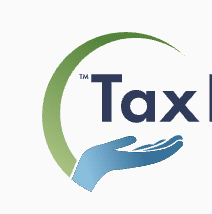
However, many taxpayers miss out on valuable savings simply because they don't understand the rules around charitable tax deductions.
If you're dealing with broader tax challenges, consider exploring our best tax relief companies for comprehensive support. This guide will walk you through everything you need to maximize your charitable tax deductions while staying compliant with IRS requirements.
Key Insights
- Documentation is critical for donations over $250, requiring written acknowledgment from charities before filing your return.
- Compare itemized deductions to the standard deduction and consider bunching multiple years of donations into one year.
- Appreciated assets offer double benefits by avoiding capital gains taxes while deducting the full market value.
- Strategic timing during high-income years and donor-advised funds provide immediate deductions with flexible giving.
What is a Tax-Deductible Donation?
A tax-deductible donation is a charitable contribution that reduces your taxable income, potentially lowering the amount you owe in taxes. However, not every donation qualifies for this tax benefit.
Organizations That Qualify for Tax-Deductible Donations
To claim a deduction, you must donate to qualifying organizations, primarily 501(c)(3) nonprofits. These include well-known charities like the American Red Cross, Goodwill, and the Salvation Army.
Beyond these familiar names, other qualifying recipients include:
- Public institutions: Libraries, schools, and government entities.
- Religious organizations: Churches, synagogues, mosques, and other faith-based groups.
- Veterans' groups: Organizations supporting military veterans and their families.
Pro tip: The IRS has a search tool on its website to verify whether an organization qualifies for tax-deductible donations.
What Types of Donations Are Tax-Deductible?
Cash donations are straightforward, but you can also donate goods like clothing, furniture, books, or toys to qualifying organizations like Goodwill or the Salvation Army.
Other qualifying donation types:
- Payroll withholding: Employer-sponsored charitable giving programs (keep pay stubs as proof).
- Online donations: Contributions through fundraising platforms, if the recipient is an eligible charity.
- Stock donations: Appreciated securities donated directly to qualifying organizations.
- Qualified charitable distributions: Direct donations from IRAs for those 70 or older (up to $100,000 annually, or $200,000 for married couples where both spouses qualify).
What Donations Are Not Tax-Deductible?
- Individual donations: Direct gifts to people, even for good causes
- Political contributions: Campaign donations or political action committee gifts
- Raffle tickets and auctions: Only the amount exceeding the value of prizes or meals received
- Foreign charities: Organizations not registered as U.S. tax-exempt entities
- Crowdfunding platforms: Unless the recipient is a verified, eligible charity
Remember, while you can deduct out-of-pocket expenses for volunteer work, like mileage at 14 cents per mile, you can't deduct the value of your time or services.
How to Maximize Your Tax Deductions for Charitable Giving
Smart charitable giving strategies can significantly amplify your tax benefits. Understanding these approaches helps you give more effectively while maximizing your deductions.
When to Time Your Donations for Maximum Tax Benefits
- High-income years: Make larger donations when you receive bonuses, sell property, or have significant capital gains.
- Bunching strategy: Combine multiple years of donations into one year to exceed the standard deduction threshold.
- End-of-year timing: Complete donations by December 31st to claim deductions for that tax year.
Bunching Strategy
Since the standard deduction increased substantially in 2018, many taxpayers no longer benefit from itemizing. The "bunching" strategy involves making multiple years' worth of charitable contributions in a single year.
For example, instead of donating $3,000 annually for three years, you might donate $9,000 in one year and nothing in the other two. This approach can push your itemized deductions above the standard deduction threshold, providing actual tax savings.
Donating Appreciated Assets Instead of Cash
Beyond timing your donations strategically, what you donate can be just as important as when you donate it. Here's what you need to do:
- Avoid capital gains: When you donate stocks directly instead of selling them first, you skip paying capital gains taxes on the appreciation.
- Deduct full value: You can deduct the stock's current market value as a charitable contribution, not what you originally paid.
- Diversify your portfolio: Donating concentrated holdings lets you reduce risk in specific stocks without triggering taxable events.
Instead of writing a check, consider donating stocks or other assets that have increased in value. This strategy works particularly well for high earners looking to reduce their tax liability and maximize their charitable impact.
Keep in mind that the IRS limits charitable deductions to a percentage of your adjusted gross income—typically 60% for cash donations. If your donations exceed this limit, you can carry the excess forward to future tax years. Corporations face different limits, with deductions capped at 25% of taxable income.
Use Donor-Advised Funds to Optimize Deductions
These accounts offer immediate tax deductions up to 30% of your AGI while allowing flexible giving timelines. You can contribute cash, stocks, mutual funds, and other assets, and the money grows tax-free while you decide which charities to support over time.
This strategy works particularly well for high earners who want immediate tax benefits but aren't sure where to give, or those looking to reduce their taxable income significantly.
Documentation for Tax-Deductible Donations
Proper documentation can make or break your charitable deductions. The IRS has specific requirements that vary based on your donation amount and type.
- Cash donations under $250: You need evidence of your donation, such as a bank record, receipt, or canceled check. While the documentation requirements are minimal, having proof remains essential.
- Donations of $250 or more: Get written acknowledgment from the charity before filing that includes donation amount, date, and details of any goods or services received in exchange (back-dating won't fix missing documentation).
Non-cash Donation Requirements
- Over $500: Complete Form 8283, Section A, and attach it to your income tax return.
- Over $5,000: Complete Form 8283, Section B.
- Over $500,000: File Form 8283, Section B, plus attach a qualified appraisal.
Pro tip: Research fair market value by checking thrift store prices or Goodwill's valuation guides for clothing, comparing Amazon or Facebook Marketplace prices for books and electronics. Plus, consider getting professional appraisals for high-value items like jewelry or artwork.
Documentation Mistakes That Can Hurt Your Tax Deductions
Avoiding common tax errors around documentation can save you from having your charitable deductions rejected by the IRS.
- Missing acknowledgments: Not getting written confirmation letters from charities for any donation of $250 or more.
- Late documentation: Receiving acknowledgment letters after you've already filed your tax return (back-dating won't fix this timing issue).
- Insufficient proof: Failing to keep bank records, receipts, or canceled checks for donations under $250.
- Incomplete forms: Forgetting to complete and attach Form 8283 when donating non-cash items worth more than $500.
- Missing appraisals: Not including required qualified appraisals for high-value non-cash donations exceeding $500,000.
Claiming Your Deduction: Itemizing vs. Standard Deduction
Itemizing makes sense when your total deductions exceed the standard deduction. For 2025, the standard deduction is $15,750 for single filers and $31,500 for married couples filing jointly.
When Itemizing Saves You More Money
- High mortgage interest: Substantial home loan interest payments.
- Significant medical expenses: Major healthcare costs exceeding 7.5% of your AGI.
- State and local taxes: Large SALT deductions (capped at $10,000).
- Charitable contributions: Combined with other deductions to exceed the standard amount.
Pro tip: Even if your charitable donations seem small, add up all your potential deductions. Combining modest charitable contributions with mortgage interest, medical expenses, and state taxes might push you over the standard deduction threshold, making itemizing worthwhile.
Tax Forms You'll Need for Charitable Deductions
- Schedule A: Primary form for itemized deductions on Form 1040.
- Form 8283: Required for non-cash donations over $500.
- Form 1098-C: Needed for vehicle, boat, or airplane donations.
If you forget to claim charitable deductions, you can file Form 1040-X to amend your return. You must file a separate amended return for each year you're correcting, and you may also need to amend your state return depending on local laws.
Special Tax Benefits for Retirees
For retirees with traditional IRAs, qualified charitable distributions offer unique advantages. If you're 70 or older, you can donate up to $100,000 annually directly from your IRA to charity. This amount doesn't count as income, effectively providing a tax-free donation method that satisfies required minimum distributions.
Conclusion
Whether you're making small annual contributions or planning major gifts, these strategies will help you maximize your charitable impact and tax savings. Remember to consult with our recommended tax relief providers for complex situations or when dealing with substantial donation amounts.
Frequently Asked Questions
1. Can I deduct donations made with a credit card?
Yes, you can deduct charitable donations charged to a credit card in the year you make the charge, not when you pay the bill. Keep your credit card statement and charity acknowledgment as documentation.
2. What happens if my charitable deductions exceed the AGI limit?
If your contributions exceed the annual limits (typically 60% of AGI), you can carry forward the excess for up to five years. This ensures you don't lose the tax benefit of large gifts.
3. Do I need an appraisal for donated household items?
You only need a professional appraisal for non-cash donations over $5,000. For smaller items, use thrift store prices or Goodwill's valuation guides to determine fair market value.



